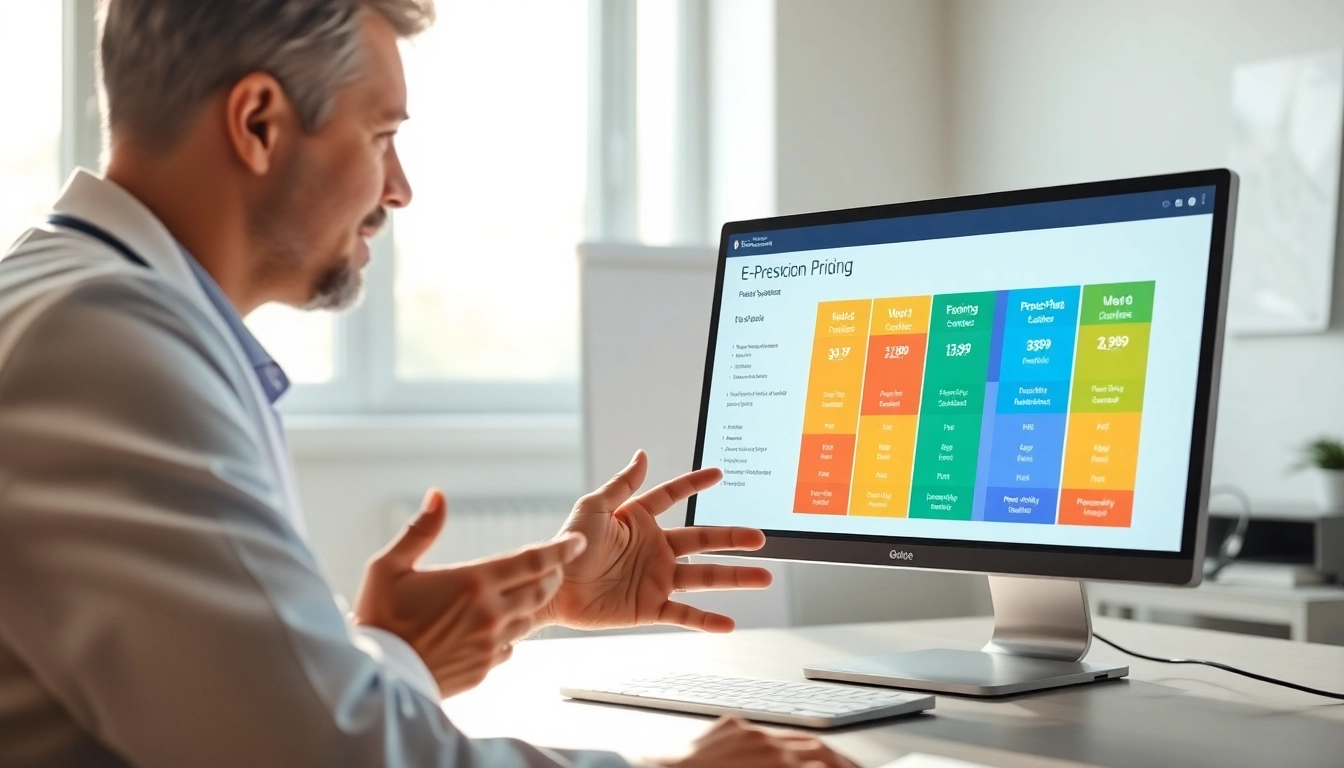Understanding the Basics of Electronic Prescribing
What Are Electronic Prescriptions?
Electronic prescriptions, often referred to as e-prescriptions, are digital versions of traditional paper prescriptions. Such prescriptions are generated by healthcare providers using electronic systems or software, allowing them to send prescriptions directly to pharmacies. This practice eliminates the risks associated with handwritten prescriptions, such as misinterpretation of handwriting and errors in medication dosage or frequency. E-prescribing enhances efficiency, safety, and convenience in the prescription process.
Benefits of Using Apps for Electronic Prescriptions
Utilizing apps for electronic prescriptions offers numerous advantages for both healthcare providers and patients. The main benefits include:
- Improved Accuracy: By allowing healthcare providers to enter information directly into a digital system, e-prescriptions minimize human errors linked to handwriting or communication discrepancies.
- Enhanced Patient Convenience: Patients receive prescriptions faster and can easily access their medication information on mobile devices, improving adherence and treatment outcomes.
- Reduced Workflow Burdens: E-prescribing apps streamline the workflow of healthcare providers, reducing the administrative workload associated with traditional prescribing practices.
- Integration with Health Records: Many e-prescribing applications integrate seamlessly with electronic health records (EHR), promoting a holistic view of patients’ health histories.
How Electronic Prescribing Enhances Patient Safety
Patient safety is paramount in healthcare, and electronic prescribing plays a crucial role in safeguarding patients. E-prescribing reduces the chances of errors caused by illegible handwriting and miscommunication. Moreover, many electronic systems have built-in clinical decision support that alerts providers about potential drug interactions, allergies, and contraindications. This proactive approach to medication management not only enhances safety but also fosters better therapeutic outcomes for patients, ensuring they receive the right treatment at the right time.
Key Features to Look for in Electronic Prescription Apps
User-Friendly Interface for Easier Navigation
An intuitive user interface is essential for e-prescribing apps. Providers should look for applications that offer easy navigation, clear menus, and straightforward steps to capture prescriptions. The design should accommodate quick access to essential features to facilitate timely prescribing without unnecessary delays.
Integration with Medical Records and Pharmacy Systems
For a truly effective e-prescribing experience, apps should integrate with existing medical records and pharmacy systems. This integration allows healthcare providers to access comprehensive patient histories, including medication allergies and previous prescriptions, ensuring safe prescribing practices. Moreover, seamless communication with pharmacies can enhance prescription management on both ends.
Security Features to Protect Patient Data
Due to the sensitivity of healthcare information, it is vital that e-prescribing apps prioritize robust security measures. Look for applications that utilize encryption, multifactor authentication, and regular security updates. By protecting patient data, these systems not only comply with legal regulations but also foster trust between providers and patients.
Comparative Analysis of Popular Apps for Electronic Prescriptions
Feature Comparison Chart
To make an informed choice when selecting an e-prescribing app, a feature comparison chart can be beneficial. Below is a summary of key features to compare:
| App Name | User Interface | Integration Capability | Security Features |
|---|---|---|---|
| iPrescribe | Intuitive and user-friendly | Integrates with EHR systems | Multi-layered security protocols |
| MDToolbox | Simple navigation | Seamless pharmacy communication | HIPAA compliant encryption |
Pricing Structures and Budget Considerations
The cost of e-prescribing applications can vary significantly based on functionality, features, and licensing. Providers should assess their budget and consider long-term benefits when evaluating pricing structures. Some apps may offer tiered pricing based on the number of users, while others may provide flat-rate monthly subscriptions. In addition to base costs, it’s essential to factor in potential training and implementation expenses.
User Reviews and Ratings Evaluation
Before committing to any e-prescribing app, it’s wise to review user feedback. Consider the pros and cons shared by current users regarding functionality, customer support, and issues encountered during the implementation process. High ratings often correlate with reliability, but specific user experiences offer more granular insights into suitability for your unique practice.
Implementing Electronic Prescription Apps in Your Practice
Steps for a Smooth Transition From Paper to Digital
Transitioning from traditional paper prescriptions to e-prescribing requires careful planning. Start by assessing current processes and determining the features most pertinent to your practice. Next, select an e-prescribing app that meets your needs and conduct a pilot test. Once feedback is collected, roll out the app across the practice. Ensure that all workflows are mapped out to facilitate a seamless transition that minimizes disruptions.
Training Staff on New Technology
For a successful implementation, comprehensive training sessions are essential. Staff should be familiar with using the e-prescribing app and be aware of the latest guidelines for electronic prescriptions. Encourage hands-on training and provide resources readily accessible for any future questions. Continued education will keep the entire staff updated regarding software upgrades and new features.
Common Challenges and Solutions
While the transition to e-prescribing offers many advantages, it can come with challenges such as resistance to change, technical issues, or integration problems. To tackle such issues, establish a clear communication channel for addressing concerns and consider appointing a project champion to support the transition. Regular check-ins and the appointment of designated tech support can help alleviate frustrations and keep the process running smoothly.
Measuring the Impact of Apps for Electronic Prescriptions
Analyzing Workflow Efficiency and Productivity
After implementing an e-prescribing system, it’s vital to evaluate its impact on workflow efficiency and productivity. Metrics such as prescription turnaround times, administrative burden reduction, and overall workflow improvements can provide insights into the benefits gained from switching to digital prescriptions. Collecting data periodically will help assess whether the expected efficiencies align with the outcomes.
Patient Feedback and Satisfaction Metrics
Patient feedback is crucial in evaluating the efficacy of e-prescribing applications. Gather input through surveys, reviews, or direct conversation to understand how patients perceive their medication management experience. Metrics to consider include patient satisfaction scores, adherence rates, and feedback on the convenience of receiving prescriptions electronically. This insight will help fine-tune prescription practices to enhance patient care further.
Future Trends in Electronic Prescribing Technology
The landscape of electronic prescribing is constantly evolving. Upcoming trends may include enhanced AI-driven decision support systems, increased personalization in medication management, and further integrations with telehealth platforms. Staying abreast of these trends allows providers to continuously adapt and leverage technology to enhance patient care. Moreover, anticipating changes in regulations surrounding e-prescribing can ensure compliance and help practices remain on the cutting edge of healthcare technology.




